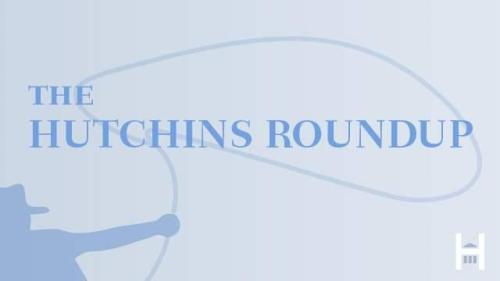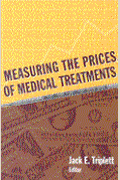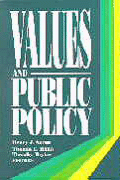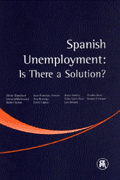Studies in this week’s Hutchins Roundup find that inflation mismeasurement has accelerated, new monetary policy tools have limited impact on financial conditions, and more.
Want to receive the Hutchins Roundup as an email? Sign up here to get it in your inbox every Thursday.
Inflation mismeasurement has accelerated
David Byrne from the Federal Reserve Board and Carol A. Corrado from Georgetown University argue that consumer price inflation in the last three decades has been increasingly overstated due to biased price measurements of consumer digital access services (e.g., internet, mobile phone, cable TV, and streaming). By leveraging data on the volume and quality of usage for these services, they construct an alternative price index which shows that prices for these services fell by 12 percent per year from 1988 to 2018 while official prices went up modestly. Using their index, they calculate that personal consumption expenditure prices have been overstated by 0.2 percentage point during this period. The authors conclude that since mismeasurement has increased over time, the slowdown in the annual rate of productivity since 2005 has been around 1 percent rather than the official estimate of 1.25 percent.
New monetary policy tools may have limited ability to fight the next recession
Stephen Cecchetti of Brandeis International Business School and coauthors find that new monetary policy tools—forward guidance, balance sheet policies, and negative nominal interest rates—have limited impact on financial conditions. Focusing on eight advanced countries, the authors find that, of the 84 instances in which these tools were deployed, financial conditions eased in about 25% of the cases, but tightened in about 20%. This suggests that the tools were often insufficient to offset other factors that were leading to tighter financial conditions. The authors also find that state-contingent forward guidance was most effective in improving financial conditions and suggest that policymakers should communicate clearly that they intend to use the new policy tools aggressively to combat the next recession. While these tools should be deployed during a downturn, the authors also warn, that policymakers should be aware that their effects may be limited.
Labor market isn’t as tight as unemployment rate suggests
Andreas Hornstein from the Federal Reserve Bank of Richmond and Marianna Kudlyak from the Federal Reserve Bank of San Francisco find that there has been a secular decline in the trend unemployment rate, and that the current gap between actual and trend unemployment is not exceptionally low. They note that, in contrast to previous business cycles, current unemployment is low because of the low rates at which people come off the sidelines to enter unemployment, rather than because of high job finding rates, and that this rate of unemployment entry has been falling for a decade, suggesting structural rather than cyclical causes. By comparing the gap between actual and trend unemployment rates over time, they then show that the recent magnitude of the gap is comparable to that at the past two labor market peaks, the years 2000 and 2006-07, suggesting that labor markets are no tighter now. The authors suggest that their results might help explain why wage growth and price inflation have remained modest relative to the decline in the unemployment rate.
Chart of the week:

Quote of the week:
“The current generation of central bankers faces a different core challenge than the last generation, with substantially smaller scope for cutting interest rates to buffer the economy and inflation that is low and relatively unresponsive to resource utilization. With trend inflation running below the symmetric 2 percent objective, there is a risk that inflation expectations have slipped. With price inflation showing little sensitivity to resource utilization, policy may have to remain accommodative for a long time to achieve 2 percent inflation following a period of undershooting. With the equilibrium interest rate very low, the Federal Open Market Committee can cut the federal funds rate by only about half as much as it has done historically to buffer the economy from recession. Consequently, the policy rate is likely to be constrained by the lower bound more frequently, likely at times when inflation is below target and unemployment is elevated. The likelihood that the policy rate will be stuck at the lower bound more frequently risks eroding expected inflation and actual inflation, which could further compress the room to cut nominal interest rates in a downward spiral. Japan’s experience illustrates the challenges associated with such a downward spiral,” says Lael Brainard, member of the Federal Reserve’s Board of Governors.
“Today’s new normal calls not only for a broader set of tools, but also a different strategy. We should clarify in advance that we will deploy a broader set of tools proactively to provide accommodation when shocks are likely to push the policy rate to its lower bound. Equally important, we should adopt a strategy that successfully achieves maximum employment and average inflation outcomes of 2 percent over time.”











Commentary
Hutchins Roundup: Inflation mismeasurement, new monetary policy tools, and more.
February 27, 2020